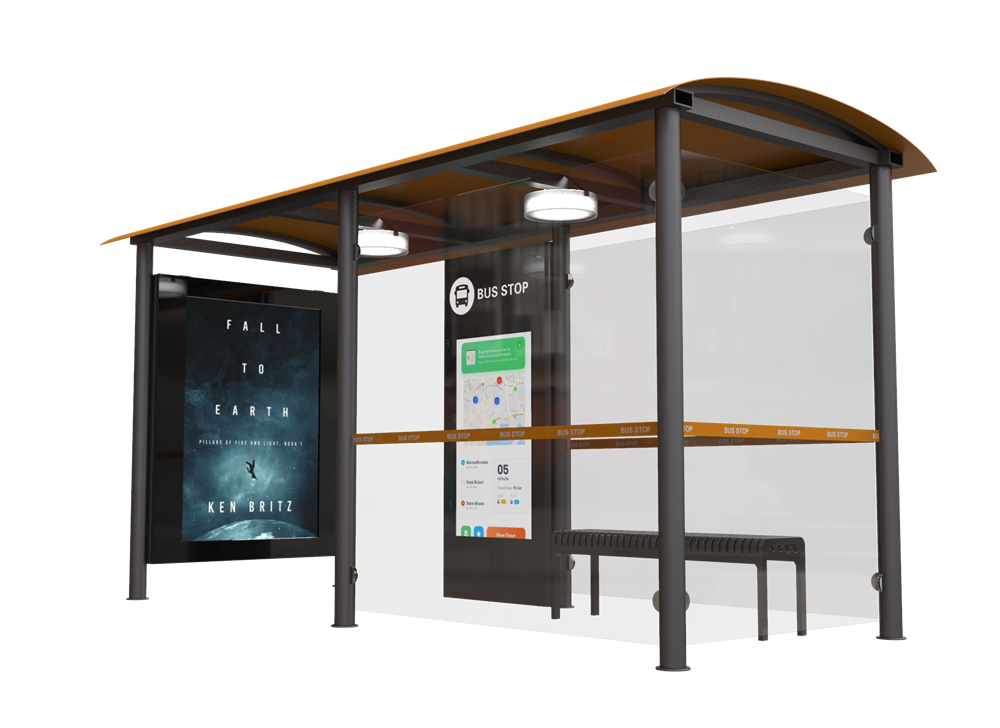Bus shelters are an important component of urban public transportation, providing citizens with places to wait for transportation. Therefore, the production and design of bus shelters must take into account the needs of users, combined them with actual situations, and fully consider various factors such as the type of transportation, parking time, number of waiting passengers, and geographical location, to make an excellent design. Below, the manufacturers of bus shelters will explore the key points in the production and design of bus shelters from the following aspects.
1、 Security design
Safety is a very important aspect of the design of bus shelters. Reliable waterproof and insulating materials need to be used on the top of the waiting cover. The pillars and supporting structures of the bus shelter should be made of sturdy materials to ensure its stability and overall structural stability, and to prevent accidents from occurring.
In addition, for pedestrians to get on and off more safely and conveniently, the entrance and exit of the bus shelter need to be flush or slightly higher than the vehicle. At the same time, the roof of the shelter should be made of reflective materials to facilitate the remote detection of the shelter's presence when vehicles are driving at night, thereby reducing the occurrence of traffic accidents.
2、 Reasonable spatial design
The space of the bus shelter should be reasonable, and different sizes of bus shelters should be designed based on different pedestrian flows. It is necessary to consider moderate ventilation and the ability to control indoor temperature, as well as sufficient lighting and shading so that users can wait comfortably in different seasons and periods. At the same time, to make better use of space, facilities such as sidewalks, communication equipment, information signs, trash cans, comfortable seats, small tables next to the seats, and newspaper racks can be set up in the shelter, allowing waiting passengers to enjoy a certain level of comfort during prolonged waiting.

3、 Design of public cultural and artistic elements
To provide citizens with more spiritual enjoyment during the waiting process, the production and design of the bus shelter also need to consider the addition of public cultural and artistic elements. For example, suitable artistic murals, pattern designs, and common cultural architectural styles with regional characteristics can be added to the interior and exterior walls of the bus shelter. These elements can create a good cultural atmosphere and increase the user's sense of tourists and identity.
4、 Ecological and Environmental Protection Design
The production and design of the bus shelter also need to consider the ecological and environmental protection aspects. On the one hand, it is necessary to protect the surrounding vegetation and atmospheric environment. Multiple choices must be made for the location of bus shelters, such as setting up shelters in open areas, parks, or areas with low populations. This can reduce the cost of land mining and labor, create a good ecological environment, and facilitate user travel. In addition, benefiting from the development of solar technology, the power supply of bus shelters can use solar panels, which can reduce energy waste and pollution, as well as eliminate usage costs.
5、 Design of hygiene and maintenance
To ensure the continued service of the bus shelter, maintenance, and hygiene are also very important key points in the production and design. When designing bus shelters, attention should be paid to their ease of maintenance and cleanliness. For example, using materials that are easy to clean, installing toilets, and installing automatic disinfection devices can all help improve hygiene conditions and better maintain the environment of the bus shelter and surrounding areas.
The manufacturing and design of bus shelters should be comprehensively evaluated from multiple perspectives to meet the standards of convenience, safety, environmental protection, and other aspects. Its design involves multiple fields such as transportation, public culture and art, and environmental protection. Only with multiple considerations can a more reasonable and aesthetically pleasing shelter be created that meets user expectations.








 Share to:
Share to: